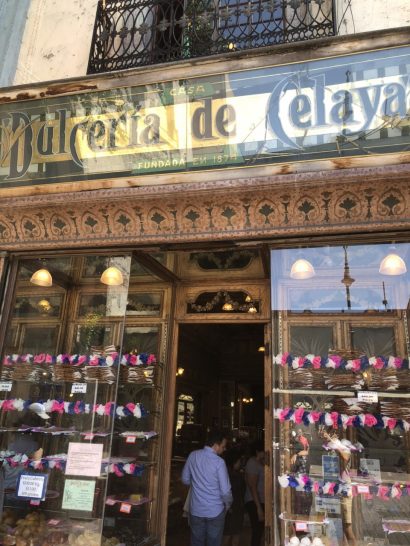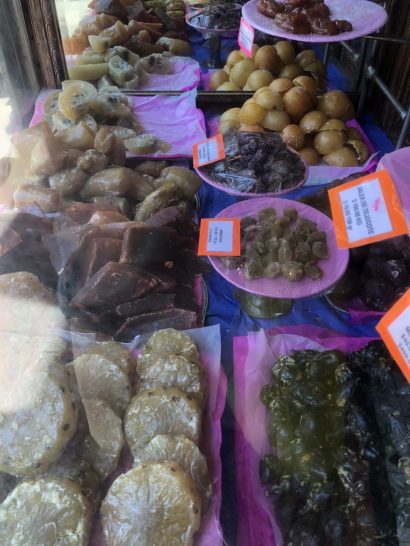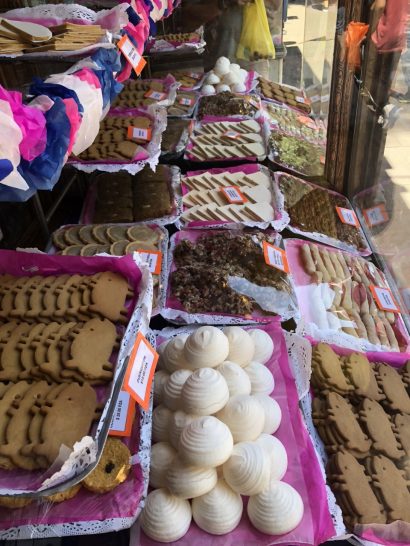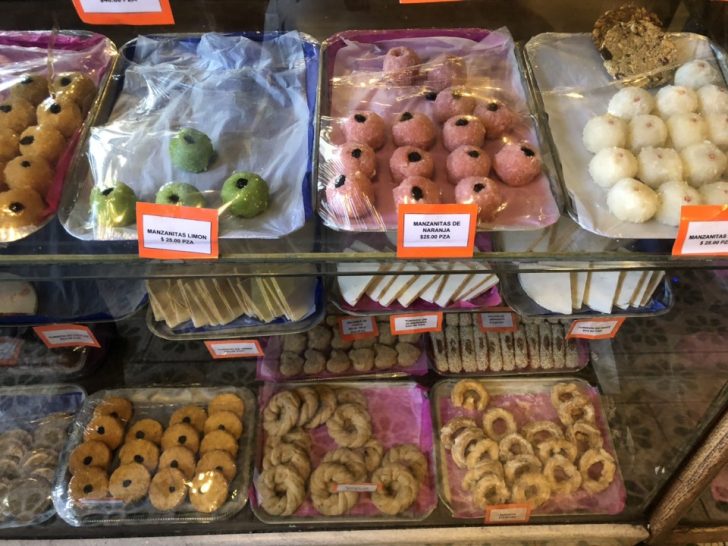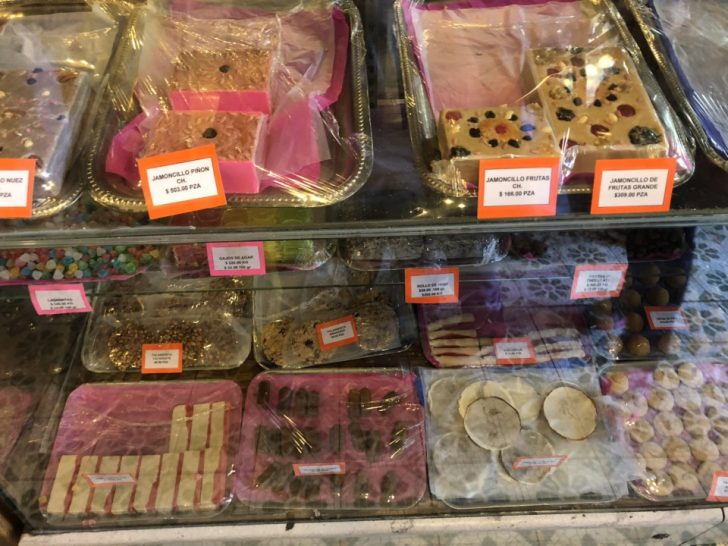Sabores Mexico Food Tours offer an award-winning food tour of Mexico City’s street food, which is a must-do activity for first-timers to the Mexican capital. Tours last from 3 to 4.5 hours and are offered anywhere from noon to 7:30 P.M., all 7 days of the week. Each tour is guided by a local in groups no greater than ten individuals in order to ensure that each guest will get the optimal tasting of one of the foodie capitals of the world. Furthermore, there are tours in both Spanish and English that are available, so that both native and non-native speakers can pick and choose which suits them best.
There are three types of tours available, at different prices, including:
- Colonia Roma Food Tour, which is ~$60.00 USD for adults, $50.00 for kids, and takes participants through the more “hipster” Roma Norte neighborhood. This is a mid-day tour
- HistoricCenter Food Tour, which costs ~$65.00 USD for adults, $50.00 for kids, and takes place in the historic centro of Mexico City, which is the oldest neighborhood, and provides a more, “birds-eye” sampling into the vast array of Mexican flavors and dishes across the country. This is a mid-day tour and was the one we selected.
- Tacos and Mezcal Tour, which is a bit pricier for ~$95.00 USD for adults, $75.00 for kids, and takes participants through different neighborhoods visiting various Taquerias. This is an evening/nightlife tour
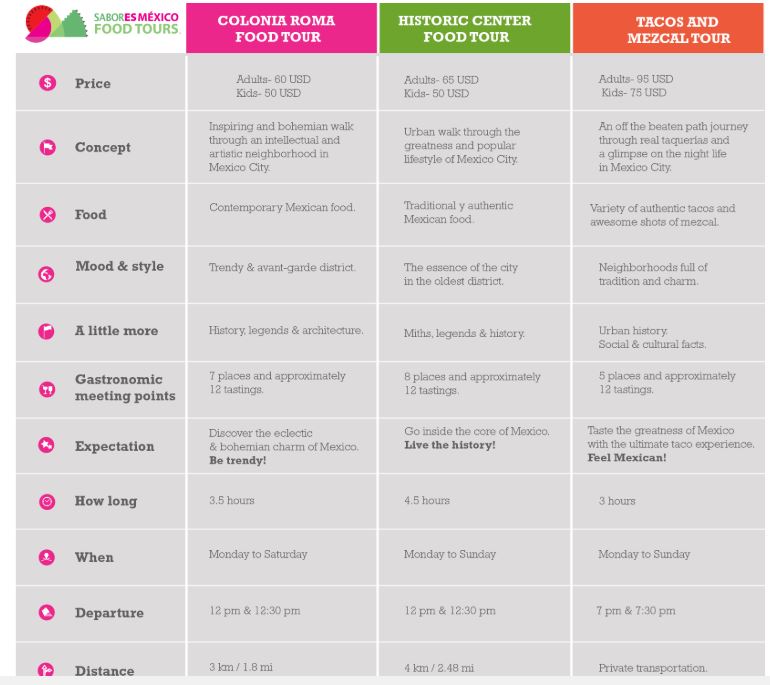
Booking tickets on its website is very easy, with both Spanish and English pages. The tours tend to fill up quickly, so we purchased our tickets around 3-4 weeks in advance to ensure that we were secured a spot. Usually, no larger than groups of 10 are accommodated, which creates a sense of intimacy and mobility.
Things to Note:
Come Hungry, Leave Happy
No matter how large your appetite is, you will be fed a ton of food on this tour. Therefore, do not arrive on a full stomach. The portions that are served along each stop are decently-sized, even by American standards, so my recommendation is, if you are taking a mid-day tour that starts at 11:30 and are a big breakfast person, to wake up early, have a light morning meal of coffee/juice/etc. and a muffin to tide you over, then arrive on-site at the meeting spot ready to roll for the afternoon. The tour begins promptly at 11:30 and you will be served your first dish right away.
Carry Minimal Cash and No Flashy Jewelry
The historic center of Mexico City is a very safe neighborhood during the day, but it is obviously older and full of tourists and locals during any given afternoon. This, of course, leads to increased risk of petty theft because of crowds. I recommend carrying minimal cash (i.e. no more than 500 MXP, which is ~$22.5 USD), your ID, and debit card. Use money belts if you want to, and leave watches and jewelry at home. Again, the odds of getting frisked are low, but you will be walking a lot through neighborhoods where a clever ladron, or thief, could pickpocket you if you’re not careful.
Wear sunscreen, Shades, and Comfortable Shoes
The tour will provide a bottle of water for the day, but bring extra if you tend to consume a lot. You’ll be doing a lot of walking, so flip-flops or high heels will be suboptimal. If it is sunny, wear sunscreen and boating glasses to protect your skin and eyes.
Now, onto the fun stuff.
The Skinny: Mexican Gastronomy
Central Mexico has come a long way in recent years from being a place you want to avoid unless you’re a fan of dysentery, crime, and pollution. In the U.S., we associate Mexican food with Tex-Mex, which does a severe injustice to Mexico’s unique flavors and culinary innovations that have been in circulation for centuries. We may know what mole tastes like or that a tamarind margarita spices up the pedestrian tequila drink, but there is so much more that has been left undiscovered by the average traveler to this glorious nation until recently.
Every ingredient and food source comes with layers of history, from how meats and seafood are prepared to how the vegetables and plants are raised to how the milk, cheeses, and sweets are curated. There is something for everyone, whether you’re vegan, gluten-free, or lactose intolerant.
And, to eat, in Mexican culture, is to live.
Furthermore, each Mexican state in the republic has taken on its own interpretation of a single recipe, like mole, for instance. In Oaxaca, for example, the locals see mole as a connection between themselves and the divinity. The state of Oaxaca has seven different varieties of mole, two of which are red, one yellow, one green, another which is a stew, varied based on ingredients used.
On our first stop, where we met our vivacious tour guide, Paloma, we tried black mole.
Stop 1: Oaxaca en Mexico
Located at Luis Moya 59, Centro, we began the journey at a traditional Oaxacan restaurant sampling enchiladas de mole negro, which was essentially a chicken enchilada bathed in black mole. Black mole is a recipe of more than 25 ingredients, ground by hand, including dark chocolate, nuts, prunes, tomatoes, cinnamon, raisins, multiple roasted chiles, and roasted peppers, to name a few, combined with chicken broth to form a paste. One of the roasted chiles is called chilhuate, which is only grown in Oaxaca. The black colors come from the ashes of dried blue tortilla that adds a smoky flavor to the paste.
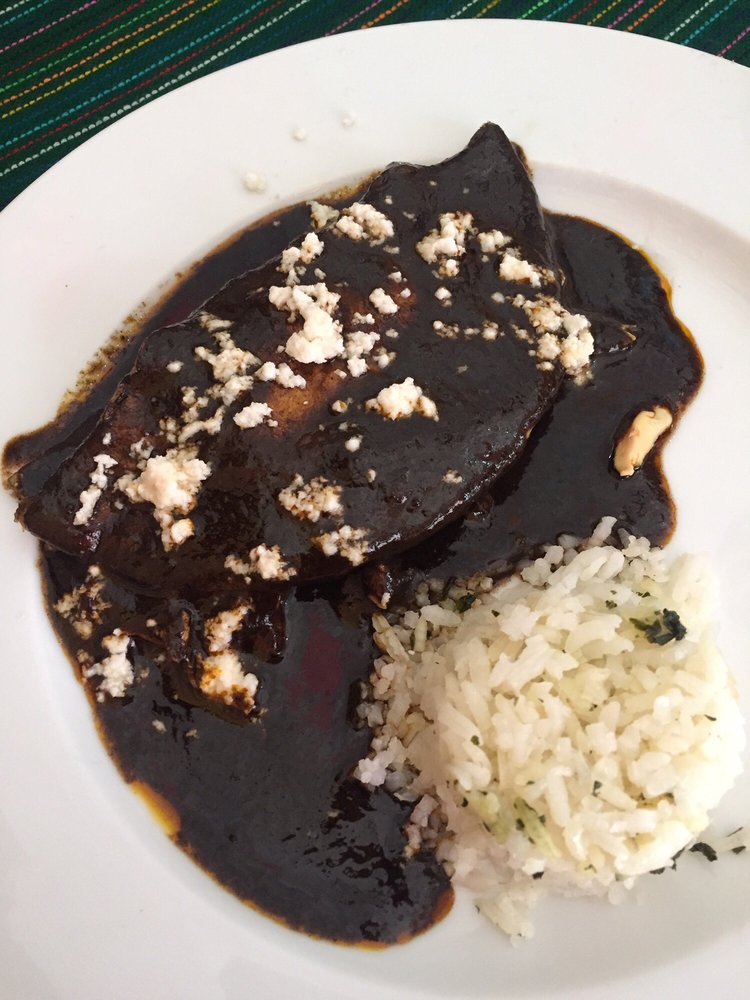
Compared to the U.S., this mole tasted smoky, but sweet, compared to the spicier mole that we have in the U.S. In Mexico, mole is always paired with rice, that has a small anise hint to it, to help neutralize the complex flavors.
I ask Paloma if Mexicans eat mole for breakfast.
“Whenever we are hungover, some of us do,” she responds with a chuckle.
In the older towns, mole is still ground by hand, versus the more “technically-advanced” method of using a blender. But, for those who prefer the legacy variation, grounding the ingredients by hand provides a perfect opportunity to families and friends to gather. Big life events or celebratory activities create an excuse to create mole using the traditional methods. Paloma explained that no weddings or quinceaneras are celebrated without mole, and it is custom for women in the families to wake up early on the day of, or even several days prior, to a big celebration to get the mole party started, simply because there is that much intricacy in the process.
The mole was so delicious, some of us were using our forks to scoop up the remaining sauce, even after we finished our enchiladas. With our palates fired up, we were ready to move on to the next adventure: San Juan market.
Stop 2: San Juan Market
This is a destination in-and-of-itself as a highlight of Mexico City. For picky eaters, this will be the least enticing stop of the trip, as this is the only market in the entire city that specializes in gourmet and exotic foods. As such, if the thought of eating rabbits and scorpions is daunting, this may be the time to take a siesta until the next stop.
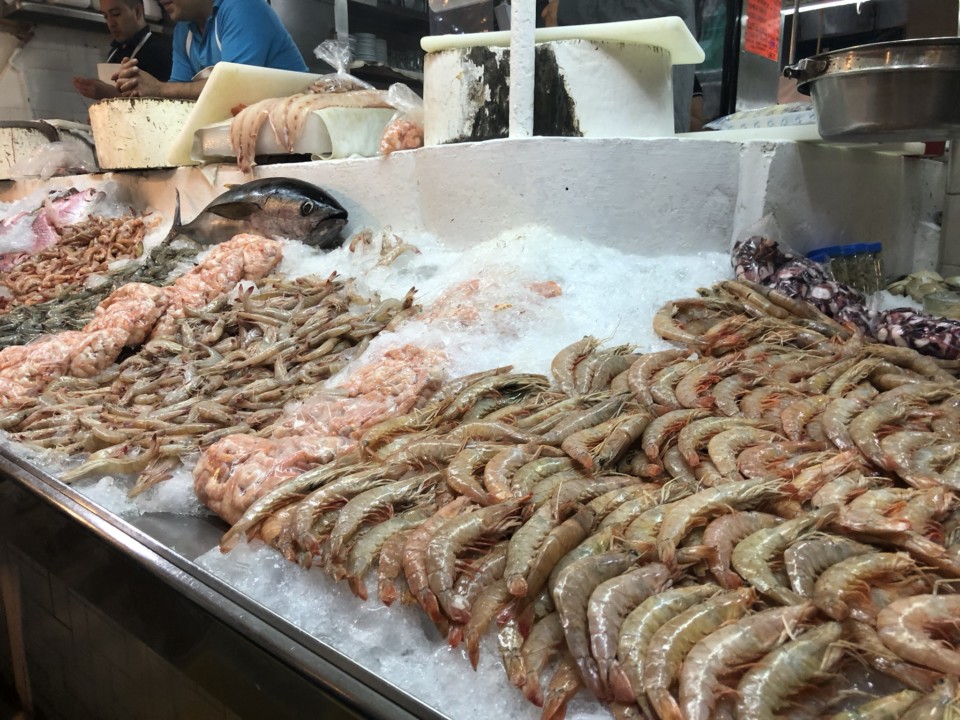
The market has a fascinating history, which Paloma stopped to explain to us in great detail before proceeding inside. It was a pre-Hispanic open-air market dating back to Mexico City’s colonial days in the 16th century. After la conquista, it continued to serve as a market for the settlers to buy their meats, cheeses, and other luxury goods.
We went inside, with plans to visit four stops within the market itself.
Delicatessen La Jersey Gourmet
Paloma served us several cups of Spanish tempranillo wines for us to enjoy with our Mexican tapas dishes, which consisted of two open-faced sandwiches with Oaxacan cheese (an interpretation of mozzarella, made with cow milk to produce a stringy texture), and a jamon sandwich made from pork belly. Both tapas were seasoned with more than 25 herbs, olive oil, and a slice of ripe tomato.

We were invited to top our sandwiches with various chilis, including a mango habanero one, and another with grasshoppers in the mix, known as chapulinas. After trying out various mixes of chili sauces on our tapas, we were licking our fingers and asking where we could buy them. Thankfully, the store sells its chili sauces for visitors to take back home with them.
Next, we walked over one more stall, where we had the opportunity to go back in time and eat like a pre-hispanic settler: eating ants, larvae, and grasshoppers, in this stall. These insects are only collected during certain times of the year, hatching in early May through late summer, and are cleaned, washed, and toasted with garlic, lime juice, and salt. These are packed with protein, so back in the day, it served as a cheap source of nutrition for more modest inhabitants of Mexico. Today, however, they’re considered a delicacy at $100 per kg.


El Gran Cazador
Next, we continued our culinary trip back to the pre-colonial days by trying out pre-Hispanic foods and meats. Here, we tried mixiote, which is a traditional pit-barbequed meat dish in central Mexico, usually prepared in an oven. It is seasoned with pasilla and guajillo chili peppers and then sealed into small packages to preserve the flavor. Today, we sampled wild boar, which was soft, sweet, and melt-in-your-mouth. Most of us were content with trying out a meat that was a bit more mainstream, but Paloma explained that it is common for the dish to use more exotic meats, like lamb, mutton, and rabbit.
Rosse Gourmet
It was time to get some fiber into our systems, so we proceeded to our final stop in the San Juan market where we had the opportunity to learn about the vegetation in Mexico and how the se of fruits, vegetables, herbs, spices, and plants have grown over time to influence local flavors and then been exported abroad to the benefit of the world.
At Rosse Gourmet, we were introduced to Claudia, who was running the show of a family-owned family-owned vegetable stand. Claudia explained that her stand sourced all of her vegetables from within 100 miles of Mexico City. We sampled coriander, rosemary, beet, mint, and edible flowers. Claudia mentioned that one of the “gifts” from Mexico to the world was tomatoes, where regular tomatoes were farmed before the Spanish came, then took back to Europe. Claudia treated us to a delicious sandwich on a baguette with veggies, cheese, cracked pepper and olive oil, all fresh from her garden. I never knew that a vegetable sandwich could taste this good.


Stop 3: El Caguamo
It was now time to put the “street” back in street food. After exiting the market, Paloma took us to ayuntamiento street for a seafood sample. She gave us the two primary rules of street food: 1) never eat at a place that looks deserted, and 2). never eat at a place that doesn’t look clean in its surroundings.

We stopped at a renown seafood stand that had started out as a simple Mom-and-Pop owned stall and then grown to several brick and mortar stores around the city. First, we sampled a shrimp broth, which Paloma said, “if you’re hungover, this is a great drink to have to make you feel like God loves you again.”
The shrimp broth was piping hot, although not too spicy, and tasted delicious. We were then treated to a delicious tostada next, which had a sumptuous ceviche mix of crab, octopus, lobster, and shrimp, with diced onions, lime juice, and avocado. I added a bit of Valentina hot sauce from the stand to give it just the right kick that it needed. Yum.

It was time for us to move onward, as we had two more stops to go. But first, we would do some wandering around Historico Centro to stretch our legs, make room for more food, and learn additional facts about the zocalo in Mexico City.
As we made our way to the fourth stop, the bar was crowded with patrons watching Real Madrid vs. Liverpool, so we circled a bit more until some spots opened up.

Stop 4: La Bipo Pasaguero
It was time for us to have more contemporary Mexican food at a Cantina. Paloma took our drink orders (beers or margaritas) and the server whisked us some delicious, refreshing lager while we awaited our final meal of the day before dessert. Here, we sampled finger foods, such as quesadilla de Jamaica and conchinita pibil. We were also treated to a delicious mint, cucumber, and lime drink.
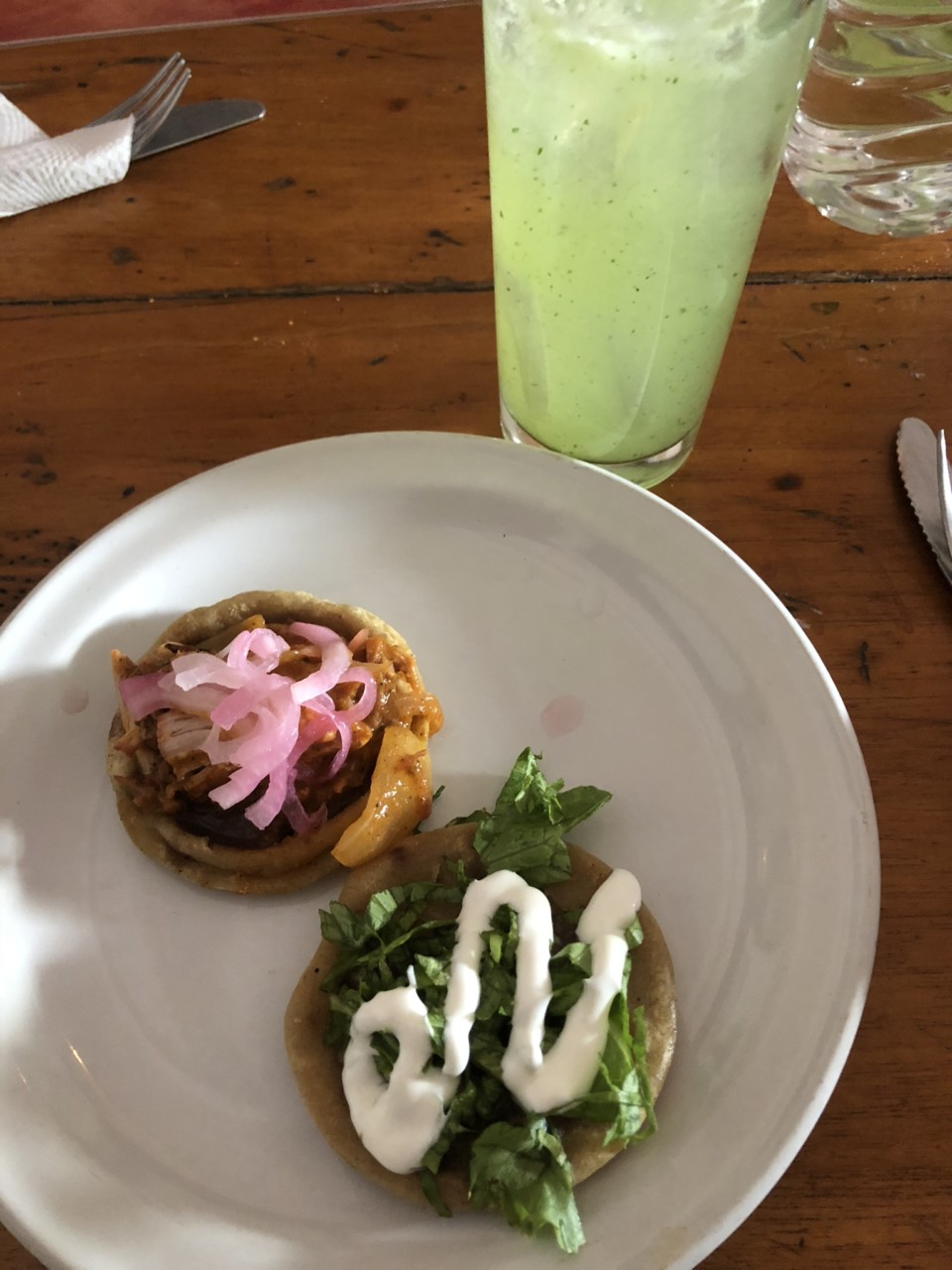
Stop 5: Dulceria de Celaya
This is one of Mexico City’s oldest candy stores, founded in 1874, and everything in the store has been kept intact since its opening day. We tried a fantastic guava sweet as well as a delicious one made of nuts.
Sadly, this was where the tour concluded, with the time nearing four o’clock and our bellies completely full. Paloma asked us what our favorite parts of the tour were, and to stay in touch as we said thank-yous and farewells.
Sabores Food Tours: Final Verdict
We were incredibly lucky to have been paired with Paloma as our guide. Not only is she a master foodie, having studied culinary arts at Le Cordon Bleu, lived abroad in Spain to study gastronomy, as well as being a professor at a local college, but also she is passionate about the subject. A native to Mexico City, Paloma admitted that she herself has been astounded by the renaissance in culinary recognition that has overtaken her hometown by storm. It felt like we were touring with a friend, not just a guide.
Sabores Mexico Food Tours are also extremely organized and efficient. They communicated regularly, sent tickets to our emails as well as to our mobile phones, and met at a location that was easy to find and safe. We felt at ease with Paloma at all times and left feeling like this was one of the highlights of our trip. Without her guidance and knowledge, we would not have been able to give the richness of Mexican food our fullest appreciation.
If you’re planning a visit to Mexico City, be sure to add Sabores Mexico Food Tours to your “to-do” list.

